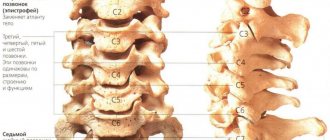The Ukrainian woman died of old age at 10 years old. The cause of death was a rare disease that causes premature aging - progeria. There is no cure for it. However, many sufferers not only live to adulthood, but also manage to become famous throughout the world.
Her mother announced the girl's death on Instagram. She noted that the child’s heart simply stopped.
“Irochka died. Yesterday her heart stopped. I’m sorry, honey, that I couldn’t save you this time,” the woman wrote.
The girl was diagnosed with progeria at the age of five. This rare genetic disease is known as Hutchinson-Gilford syndrome. It causes premature aging of the body, the skin and internal organs change.
In most patients, the first signs of progeria appear at two to three years of age. Determining the disease is quite simple. The child's growth slows down sharply, his skin becomes thin, dry and wrinkled, and veins begin to show through it. The patient has a large head with a “bird-like” face, and an underdeveloped lower jaw. Muscles atrophy and degenerative processes occur in the teeth. Changes in the myocardium and atherosclerosis are noted.
In one year, a child can age 10 years. Most patients die by 13. Progeria occurs in one in four to eight million newborns. In total, about 350 cases of Hutchinson-Gilford syndrome have been recorded in the world.
General information
Progeria is a genetic disease that is considered one of the rarest, with approximately 350 cases recorded throughout human history.
The most famous people with progeria are DJ Leon Botha and motivator Sam Burns. Progeria is not very common in Russia - only about 80 cases have been registered. The main feature of this genetic defect is premature aging of the body, which is accompanied by significant changes in the skin and the functioning of internal organs. From the Greek progeros translates as “prematurely aged.”
Leon Botha
As Wikipedia indicates, the disease is assigned the ICD-10 code: E34.8 and refers to other specified endocrine disorders.
Story
Progeria was first described by British physician Jonathan Hutchins in 1886. An example was the case of a 6-year-old boy. The disease was manifested by atrophy of the skin and its appendages. However, the term "progeria" was introduced by Hastings Guilford, who studied some of the features of the pathology.
The adult type of the disease was described by the German specialist Karl Wilhelm Otto Werner. He observed the course of the pathology while still a student using the example of four patients. He outlined all his observations in his dissertation in 1904.
In total, more than 350 cases of the disease have been recorded worldwide. Only one patient was black. From this it was concluded that Europeans are more susceptible to this pathology. Sam Burns made a major contribution to the spread of the problem of this disease. The motivational speaker did a lot to make the general public aware of the disease. Sam's parents founded the Progeria Research Foundation, whose activities are aimed at studying progeria and attracting the attention of the general public to it.
Pathogenesis
The pathogenesis of childhood progeria is based on a sudden mutation in the LMNA gene (in isolated cases it can be congenital), the gene is responsible for encoding lamin A - proteins built into the nuclear lamina and holding the membranes of the cell nucleus. The nuclear lamina is a rigid fibrillar network structure associated with chromatin threads and involved in their organization.
Violations of these structures lead to instability of cell nuclei, disruption of DNA repair processes, cloning of fibroblasts, which causes aging of the entire organism and triggers such classical processes as a result of degradation of the cellular code, such as baldness and graying, disruption of the cardiovascular system, impaired vision, generalized osteoporosis , cancer formation.
Diagnostics
The external signs of the disease are so obvious and vivid that the syndrome is diagnosed based on the clinical picture.
The disease can be detected even before the baby is born. This became possible thanks to the discovery of the progeria gene. However, since the disease is not transmitted through generations (it is a sporadic or single mutation), the likelihood that two children with this rare disease will be born within the same family is extremely low. After the progeria gene was discovered, detection of the syndrome became much faster and more accurate.
Changes at the gene level are now identifiable. Special programs, or electronic diagnostic tests, have been created. At the moment, it is quite possible to prove and substantiate individual mutational formations in the gene, which subsequently lead to progeria.
Science is developing rapidly, and scientists are already working on the final scientific method for diagnosing progeria in children. The described development will contribute to even earlier and more accurate diagnosis. Today, in medical institutions, children with this diagnosis are examined exclusively externally, and then tests and a blood sample are taken for testing.
If symptoms of progeria are detected, you must urgently seek advice from an endocrinologist and undergo a comprehensive examination.
Classification
There are childhood progeria - Hutchinson Guilford syndrome and adult progeria - Werner syndrome .
Unlike children, which manifests itself at 5-8 months of age, in adults the symptom complex of premature aging develops at approximately 20-30 years, beginning during puberty. The body and face begin to change as in the picture below (progeria - photo) with a difference of 33 years: it acquires pointed features, the nose becomes bird-like, the mouth is narrow, the voice is high and hoarse, the skin is pale, the limbs are thin, there is no subcutaneous tissue. In this case muscle atrophy , formation of trophic ulcers , hypogonadism , progression of glaucoma , cataracts , atherosclerosis , baldness and graying, tooth loss, and decreased intelligence occur.
Werner's syndrome, patient 15 and 48 years old
Ashanti Elliott-Smith
The tragedy of the Elliot-Smith family began shortly after the birth of their first child, daughter Ashanti. She was born absolutely healthy (May, 2003) and weighed like a normal child - about 2.5 kg.
“I didn’t know that she would be deprived of the future that I wanted to give her.”
Phoebe Smith, 24, says:
“The pregnancy was absolutely normal, and I thought that my daughter would be healthy. Alby (the girl’s father) and I were looking forward to it.”
“Three weeks after birth, when her body started to spasm, we first thought something was wrong.”
“7 months: our first Christmas. I started to suspect that something was wrong."
Phoebe rushed with the girl to the hospital and was shocked that the doctors mistakenly concluded that the baby had been shaken violently by one of the adults.
“I was completely dumbfounded. In the end they admitted that nothing of the sort had happened and that we had done nothing wrong. But it still upsets me a lot."
“I gave birth at 17, but there were 11 children in my family, so I have a lot of babysitting experience.” Doctors conducted a huge number of tests to understand what was wrong, but the results did not show anything definite.
But over the following months, Ashanti got worse and worse.
Phoebe, who lives near Brighton, said: “She was still having cramps, wasn't gaining weight and was bald. My doctor thought I was neglecting her."
Concerned, the mother demanded more tests. Just before the girls' fifth birthday, they were sent to London's Great Ormond Street Children's Hospital. It only took one look at her for the doctor to understand why.
"First birthday. We just found out the diagnosis. I can't believe she has progeria."
“When they explained to us what progeria is, I fainted. Alby later explained to me that it would be like caring for grandma."
“He said he had to take care of Ashanti like an elderly person because her body was aging very quickly. It was terrible, but I knew he had to accept it and deal with it.”
"3 years. She's such an inquisitive little girl."
“My mother is very close to Ashanti, so she was especially depressed. Now the baby is not the same as before.”
“It was very difficult for my mother to accept that she would outlive her granddaughter.”
The cause of the disease is a defective gene, but it is not hereditary.
Ashanti's little sister, Brandy Lou, is completely healthy.
Ashanti's father, 40-year-old Albie Eliott, said how depressing her current state is: “Ashanti is my world. And my life is devastated knowing that she is so sick.”
“I used to own a metal recycling company, but I gave it all up to spend all my time with Ashanti.”
"I'm so proud of her - she's a wonderful daughter."
"3 years. With dad in Santa's cave"
Ashanti's development stopped at the weight of a three-year-old child with a height of 1 meter. It is unlikely that Ashanti will grow any further.
Her body is very weak, so the girl must be protected from sick children, because diseases such as chicken pox and flu can kill her.
One of the hardest things for Phoebe is when passers-by start staring: “I get really angry when people start staring at Ashanti. I'm not ashamed of her at all - I just don't want them to make her feel uncomfortable. It would be better if people just came up and asked what was wrong with her.”
"When kids start staring at her, Ashanti usually smiles and says, 'It's because I'm beautiful.'"
And indeed it is. The brave little girl doesn't let anything get her down. She tries to participate in everything her friends do.
Phoebe says: “During PE at school she can’t run, but she’s allowed to throw balls with the kids.”
"4 years. The first day at school. I was worried, but everything was fine with her."
“When her arthritis starts to hurt her knees and she asks me why, I just tell her she’s special.”
Like other girls, Ashanti goes to a regular school; loves playing with her puppy Samson and is a big fan of Girls Aloud and JLS.
Her mum says: “Ashanti has a poster of JLS member Aston Merrygold on the ceiling so she can look at it when she falls asleep. He is the absolute hero of her heart."
“Last year, she and I went to their concert, and one of the guys blew her a kiss. Her weak legs began to tremble so much at the knees.”
Ashanti is also very fond of horses, so Phoebe wants to take some wheelchair riding lessons because she is too fragile for normal riding.
"5 years. Holidays in Florida. We had such a good time"
Over the past few years, the family has been having fun visiting various places, including Disney World in Florida.
Phoebe has a special memory box where she keeps every drawing Ashanti drew at school and all her belongings.
She says, “I keep everything about Ashanti because she is so special to me.”
“I won’t even throw away a sock. She is the most amazing girl and so full of life. Every moment is priceless."
"6 years. School photo. I love her smile so much. She's so happy"
Last year, Ashanti underwent trial treatment at a hospital in Marseille, in the south of France, where she visits every few months.
This program aims to improve her quality of life. However, unfortunately, she will not be able to extend it.
“The doctors, having examined Ashanti, told us that her disease was progressing very quickly, and our daughter was unlikely to survive the age of 13. It’s very difficult for my husband and I, but my daughter seems to sense our condition and always smiles at us and those around us. She never complains, although she is getting worse - she is developing arthritis and already has breathing problems, like an 80-year-old woman,” the child’s mother, who has another 4-year-old daughter, sighs bitterly. “We are trying take everything from each day."
Her parents, knowing that they could not fix the irreversible, decided not to tell Ashanti the whole truth about her illness.
Phoebe explains: "She understands a lot about her condition, but we don't talk to her about the prognosis because we don't want to scare her."
“Telling your daughter that truth is the hardest thing in the world.”
Parents are confident that their daughter will have as normal and even a happy childhood as possible. “I'm very proud of her. She doesn't let her illness interfere with her life. She is a very bright personality who leaves no one indifferent.”
Watch the video about 7-year-old Ashanti Elliott-Smith at the beginning
Progeria: causes of the disease
The disease is hereditary and is transmitted in an autosomal recessive manner, so isolated cases of brothers and sisters with progeria are explained by the fact that the parents were fairly close relatives, for example, cousins, and the disease was the result of incest. However, other causes of the disease are also called, for example:
- diencephalic-pituitary insufficiency;
- secondary damage to several glands of the endocrine system;
- is the result of one of the manifestations of other endocrine hereditary diseases.
It is also assumed that Hutchinson Guilford syndrome occurs as a result of a sporadic - sudden mutation in the sperm or egg even before the moment of conception.
Notes
- [www.mg.co.za/multimedia/2010-01-14-transcend-and-transgress Multimedia Slideshow: Transcend and Transgress - Mail & Guardian]
- [www.ncbi.nlm.nih.gov/pubmed/3728539?dopt=Abstract Hutchinson-Gilford progeria syndrome in a 45-year-old man] (English). US National Library of Medicine National Institutes of Health. Retrieved January 7, 2010.
- Progeria syndromes and aging: what is the connection? Christopher R. Burtner and Brian K. Kennedy // Nature Reviews Molecular cell Biology volume 11 - 2010 - p. 567—578 doi:10.1038/nrm2944
Symptoms
As a syndrome of premature aging, progeria disease involves various systems and organs in the pathogenetic process:
- Changes in the skin and hair: dry, wrinkled (parchment) skin, sparse gray hair, lack of eyebrows and eyelashes, thinning and brittle nail plates.
- Changes in the skull: large head disproportionate to the body, mask-like face with a hooked nose, protruding ears, exophthalmic eyes, teeth missing or erupting late.
- Changes in the musculoskeletal system: underdeveloped muscles, short stature, thin limbs, osteoporosis , constant feeling of stiffness, lack of subcutaneous fat as a result of rapid weight loss and stunted growth.
- Reproductive system: underdeveloped as a result of hypoplasia of the genital organs, there are no secondary sexual characteristics.
- The most significant and dangerous symptoms occur in the cardiovascular system: generalized atherosclerosis , which leads to thrombosis of the coronary arteries and myocardial infarction .
- Neurological disorders: decreased intelligence.
- Other: sclerosis and disruption of the brain, liver, kidneys, endocrine organs as a result of deposition of fat-like substances.
A ray of hope
Although the disease was first described in the late 19th century, until recently doctors were powerless to help such patients, and they grew old in front of their parents, who knew from the very beginning that their children were doomed. Treatment of progeria is symptomatic, mainly aimed at preventing atherosclerotic complications, eliminating diabetes mellitus, and trophic ulcers. It is almost impossible to recover and most patients die from complications caused by atherosclerosis and cancer. Prevention has not been developed
However, there is hope. A group of American scientists led by Professor Francis Collins , previously involved in human genome research, has found a way to treat progeria. Although scientists have only taken the first steps in this direction, Professor Collins emphasized his confidence that they are on the right path.
Scientists have managed to restore the normal functioning of cells extracted from the bodies of children suffering from progeria.
And all with the help of rapamycin, a substance currently widely discussed in the international scientific community. Rapamycin is a waste product of rare bacteria living in the soil. Scientists have found that rapamycin can extend the life of mammals. It also promotes good acceptance of donor organs by the body and has antitumor properties.
Collins' group was able to remove the pathological protein progerin by introducing rapamycin into the diseased cell. It is because of progerin that a disease develops that causes premature aging and death in children. It is possible that progerin is formed from normal lamin proteins. If the gene mutates, the lamins turn into progerin proteins.
Cells “cured” with rapamycin not only begin to function normally, but their life cycle is significantly extended even compared to healthy cells.
Now American molecular biologists plan to begin clinical studies of rapamycin and study its effect on infant progeria.
PS.
Few people know, but accelerated aging syndromes also include
Down syndrome (Down_syndrome ).
Down syndrome is caused by trisomy on chromosome 21 and its phenotypes include earlier onset of age-dependent pathological changes, as well as shortened life expectancy. When you look at the struggle for the lives of innocent children whom medicine is powerless to help, you simply cannot comprehend how you can bring yourself to death “with your own hands”:
Twin sisters competed in anorexia for 22 years
Creepy project by Ivonne Thein
Although, of course, such extremes also seem wild to me:
Treatment
Assistance to people susceptible to premature aging should be comprehensive, including symptomatic treatment, as well as:
- ongoing care;
- cardiac care;
- special food;
- physical therapy.
Scientists hypothesize that farnesyltransferase inhibitors (FTIs) , which help fight cancer, can also reverse the formation of structural abnormalities.
Conventional drug therapy includes:
- Aspirin - in small doses, acetylsalicylic acid helps to “thin” the blood and prevent heart attacks and strokes .
- Growth hormones - hormone replacement therapy helps solve the problem of stunted growth and stimulates weight gain.
Procedures and operations
- Dental care for the formation of a normal dentition.
- Occupational therapy and physical activity to reduce the rate at which joint stiffness develops.
- In case of generalized atherosclerosis, surgical interventions may be required - coronary artery bypass grafting or stenting to reduce the risk of heart attack.
Nurzhan Urkeshbaev
By the way, 18-year-old Nurzhan Urkeshbaev , who was also diagnosed with progeria.
Nurzhana Bazargul’s mother says:
“Nurzhan was born in 1991 as a normal, healthy child. According to tradition, we gave him to be raised by his grandmother, my mother-in-law, in a remote village. The first signs of the child’s aging began to be noticed at the age of 4: Nurzhan’s earlobes became longer and the skin near his eyes began to swell.” They first took him to traditional healers, but they could not help. They said that even in infancy the Sunnet religious rite was not properly observed, which is why they brought disaster on the child. The boy was rapidly aging, and by the age of 6 his face was disfigured by deep wrinkles.
In 2000, journalists came to the zhailau (summer pasture) for the first time and filmed a story about Nurzhan. After the hype in the media, we were immediately invited to Almaty for examination. Then Nurzhan went to Germany for examination. There, German scientists took blood and skin tests for molecular genetic studies. Later, doctors from Japan became interested in Nurzhan, but the Kazakh scientists did not have the money for the expensive trip. After a course of treatment at the Aksai Republican Children's Clinic in the Department of Ecology and Children, the aging of the body was stopped, the parents say. But over time, the public forgot about the strange boy from Mukur, but the guy himself reminded of himself by calling a television show. After a young man with the face of a 70-year-old man appeared on air, sponsors were found to pay for the necessary medical procedures.
According to parents, all children in the family are growing up healthy and strong. This year Nurzhan entered the 11th grade at Mukur Secondary School and is doing well in his studies. He has many friends, no one avoids him. In the evenings he disappears until late, like an ordinary teenager. He goes to discos in the village club.
The guy himself and his parents claim that he is healthy, but there is a problem with his eyesight, which has deteriorated a little: “I feel great, I don’t seem to notice anything special about myself. Except at night, before going to bed, I often ask Allah to change my face and make it as young as those of my peers.”
And Allah heard Nurzhan’s prayers - and three weeks ago Almaty surgeons operated on him.
The operation took place in three stages: face lift, neck and forehead lift, upper and lower eyelid lift, laser and contour plastic surgery. The first two stages have been completed, the third stage is next, which is planned for March 2012, contour plastic surgery, laser resurfacing to smooth out wrinkles and other restorative measures will be used
Meanwhile, in addition to progeria, according to medical reports, Nurzhan was diagnosed with a whole bunch of adult diseases: erosive gastritis, cholecystitis, heart problems, hypertension syndrome and others. And although the young man looks physically strong (his height is 180 centimeters, he was at least able to grow up and his physical changes are not as terrible as in the cases described above), according to doctors, now the state of Nurzhan’s body, who is only 18 years old, corresponds to 38 - 40 years old: “The condition of Nurzhan’s internal organs confirms the diagnosis of premature aging, which is 10 to 15 years ahead of his real age.”
Nurzhan's family believes progeria is the result of the influence of a nearby military test site where ballistic missile tests took place during Soviet times. However, scientists do not find a direct connection between the test site and Nurzhan’s premature aging.
As Audrey Gordon , emphasized, there are still large blank spots on the map of progeria cases identified by the foundation - areas where the organization cannot search for patients. Along with most of Africa and China, Russia is such a blind spot.
Diet for progeria
Rejuvenating diet against aging of the body
- Efficacy: no data
- Timing: constantly
- Cost of products: 1600-1700 rubles. in Week
To prevent premature aging, nutrition should be limited in calories and nutritious in quality. In addition, the diet should be:
- rich in antioxidants and include vitamins C, , rutin , etc.;
- with regular enterosorption measures to neutralize toxic substances, for example, taking activated carbon ;
- Fermented milk products should be present in the diet every day;
- You need to limit your consumption of fried red meat, alcohol, white sugar and flour products.






